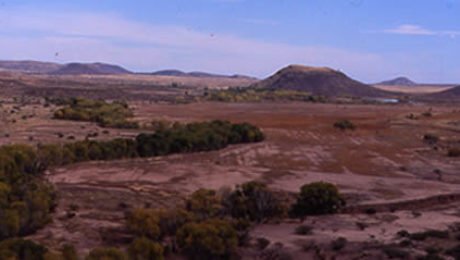South Mittry and Pratt Riparian Restoration
Project Description Bureau of Land Management proposes to use Sonoran Joint Venture funds to purchase equipment and diesel fuel for a pump to irrigate 72 acres of a cottonwood & willow forest in varying stages of development. The project is located adjacent to Mittry Lake and near the Lower Colorado River in southwest Arizona. The
- Published in Awards Program
Monitoring population and nesting success of Yellow-billed Cuckoos on the San Pedro Riparian National Conservation Area
Project Description Yellow-billed Cuckoos are a Federal candidate for endangered status, an Arizona Species of Special Concern, and have multiple listings indicating their status as a species of concern under Partners in Flight. Their regional population trend has shown a marked decline, they are of regional conservation concern, and there is a major threat in
- Published in Awards Program
Investigating the effects of re-introduced beaver on avian community dynamics along the San Pedro River, Arizona
Project Description The San Pedro River’s riparian forest is a regionally important area for breeding and migrating birds. Many land managers and restoration ecologists see the re-establishment of beaver as a potentially invaluable and low-cost tool for the restoration of riparian environments. In 1999, the Bureau of Land Management, in cooperation with the Arizona Game
- Published in Awards Program
Habitat requirements for successful nesting of hummingbird species in the Madrean Pine-Oak woodlands of southeastern Arizona
Project Description Two recent studies have shown that sites in southeastern Arizona support large numbers of hummingbirds, particularly during southbound migration. Results from HMN’s monitoring work in southeastern Arizona suggest that the Madrean pine-oak woodlands support the largest number of hummingbird species in the Sonoran Joint Venture region. However, little is known about habitat requirements
- Published in Awards Program
Montane forest birds in the Santa Catalina mountains
Project Description The goal of this study is to further our understanding of the population status, reproductive success, habitat needs, and potential limiting factors for breeding populations of montane forest birds in the Santa Catalina Mountains of southeastern Arizona. Mixed-conifer forest and Madrean pine-oak woodlands support a unique and diverse avian community. This avian community
- Published in Awards Program
Use of restored riparian habitat in the Colorado River delta in the overwintering period
Project Description This project will (1) describe the wintering ecology of Neotropical migrants in riparian habitat in the Colorado River delta, Baja California and Sonora; and (2) evaluate the value of riparian restoration efforts for migrants during the nonbreeding period. PRBO is relating bird use, overwinter site persistence, and survivorship to silvicultural practices, water flow
- Published in Awards Program
Expansion of the Little Greenhouse Project
Project Description The U.S. Fish and Wildlife Service has cooperated with other agencies such as the Bureau of Land Management and the Bureau of Reclamation in the planting of native cottonwood and willow poles on Havasu National Wildlife Refuge on the lower Colorado River. The Refuge has a nursery of cottonwood and willow trees which
- Published in Awards Program
Bird migration patterns in the arid southwest
Project Description This project uses Doppler weather surveillance radar to document bird migration patterns in the desert southwest, including information on migrant density, migrant-habitat associations, height, and direction, as well as temporal and geographic variation in these factors. The project will also document the limitations in using weather radar data to address these questions. The
- Published in Awards Program
Monitoring breeding colonies and post-breeding movements of terns and skimmers in coastal northwestern Mexico and southern California
Project Description This project will monitor the populations of terns and skimmers breeding at selected locations in coastal northwestern Mexico and southern California. It focuses on three species that commonly co-occur and establish significant breeding colonies in the region: Gull-billed Tern (Sterna nilotica), Royal Tern (Sterna maxima), and Black Skimmer (Rynchops niger). Gull-billed tern and
- Published in Awards Program
Coastal sage scrub habitat restoration and avian monitoring
Project Description Starr Ranch (SRS) is a 4,000 acre Audubon Sanctuary in the foothills of the Santa Ana Mountains in southeast Orange County, California. SRS has been working on non-chemical control of the highly noxious exotic artichoke thistle (Cynara cardunculus) in over 700 acres of heavily invaded habitats. Since 1999, artichoke thistle has been reduced
- Published in Awards Program


 English
English  Español
Español 